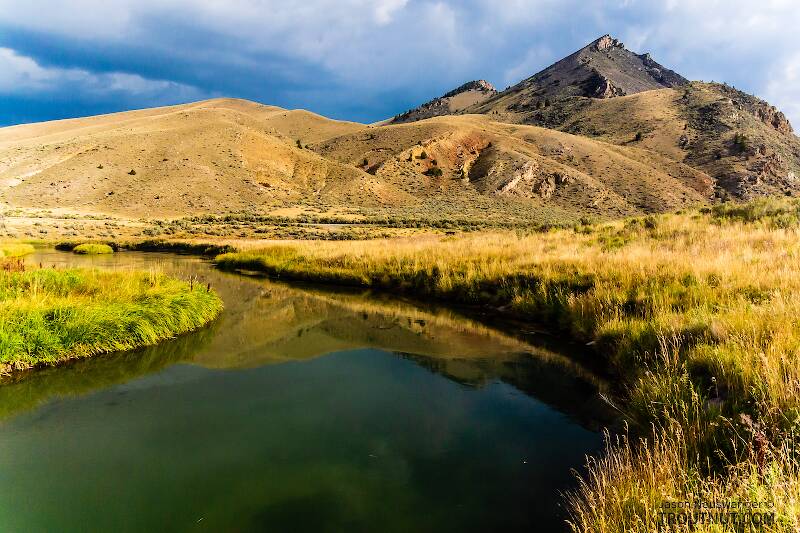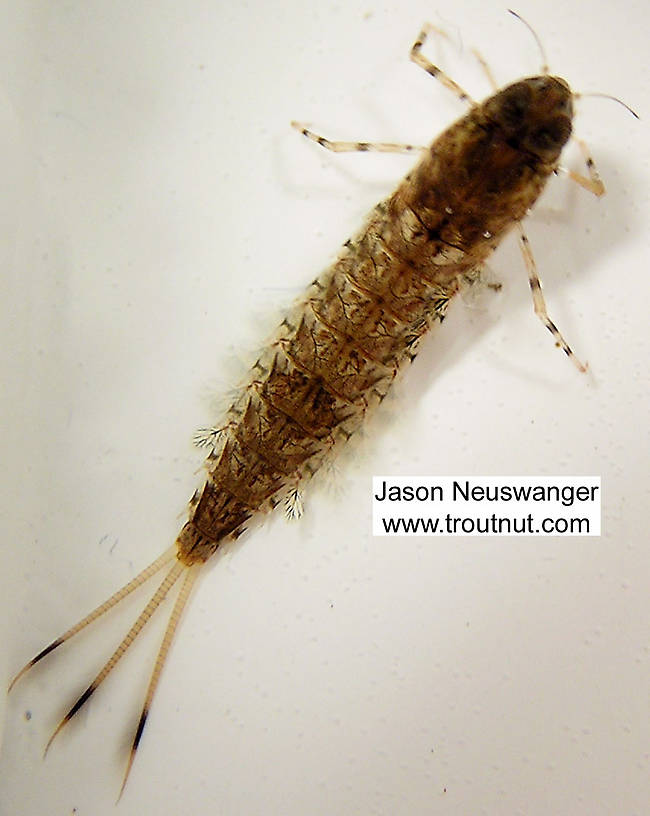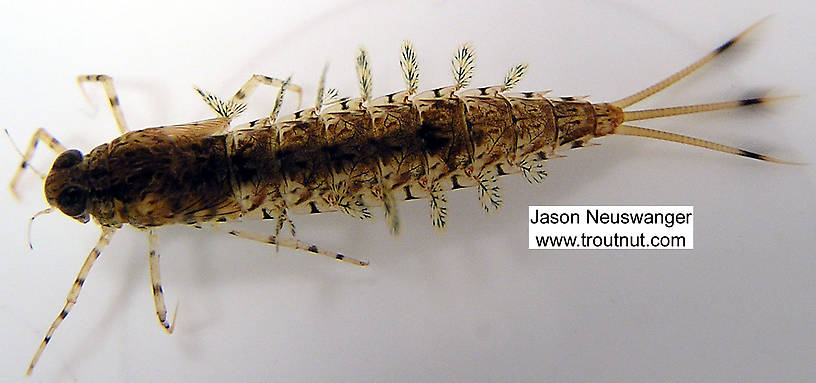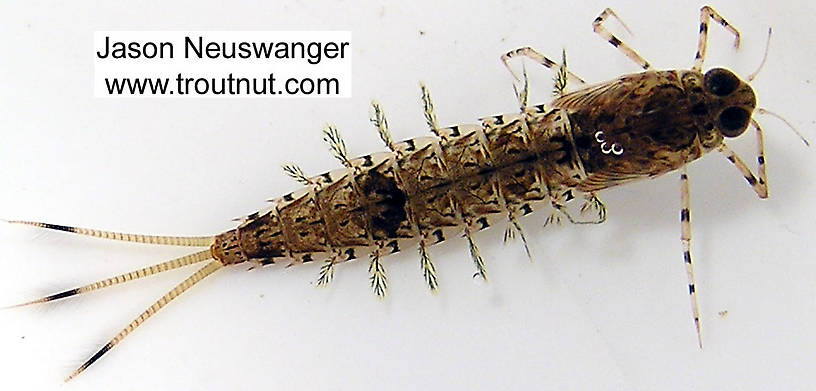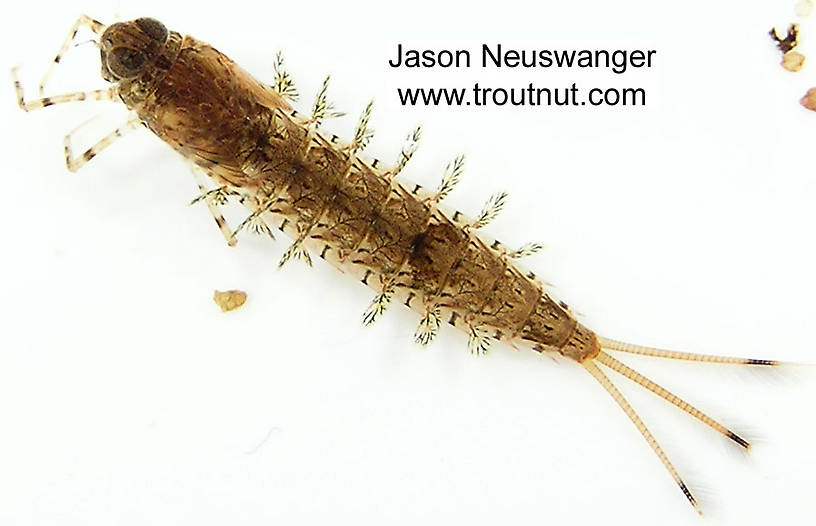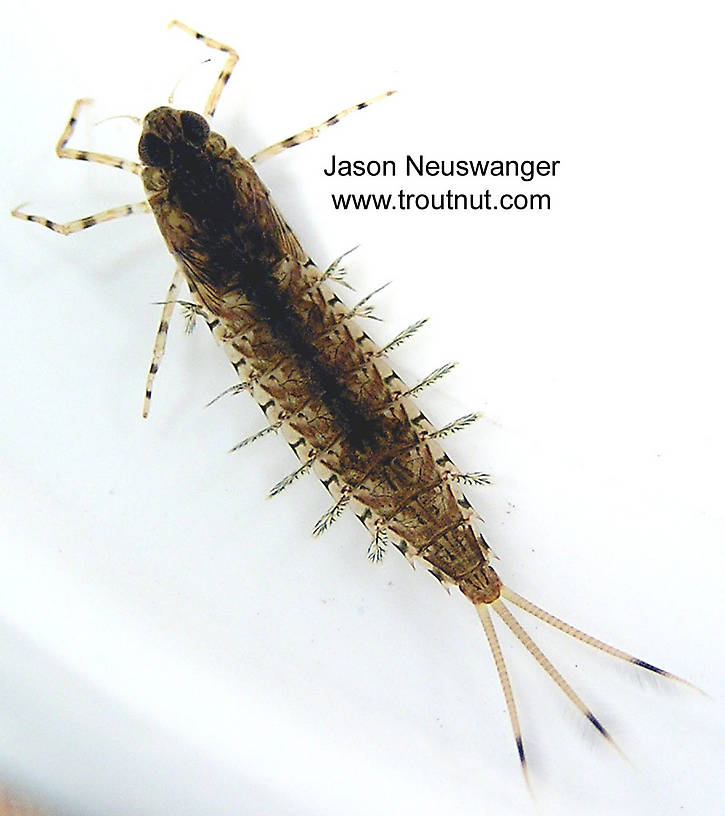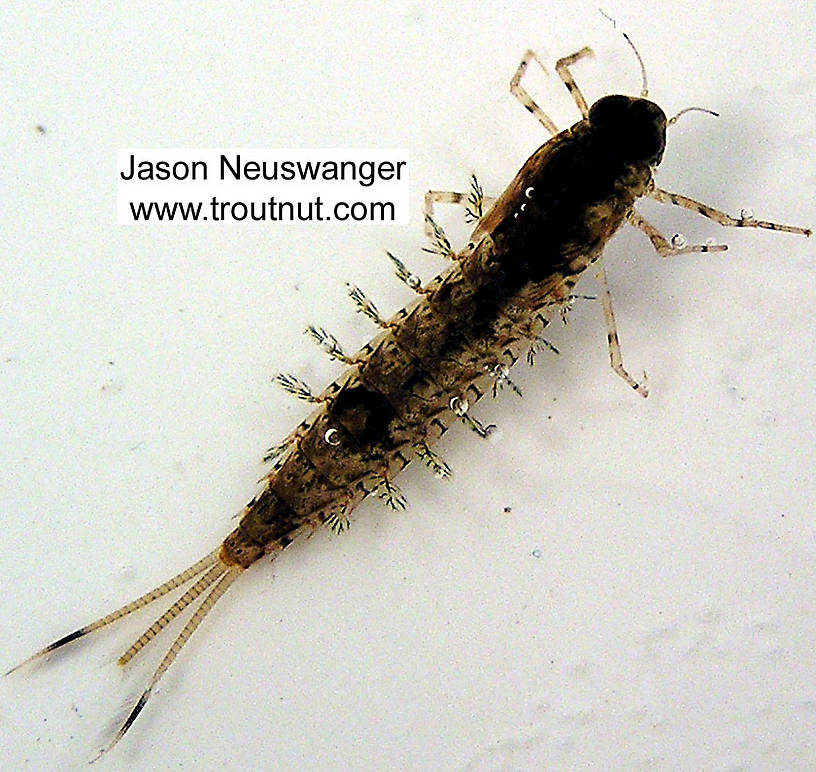
Blue-winged Olives
Baetis
Tiny Baetis mayflies are perhaps the most commonly encountered and imitated by anglers on all American trout streams due to their great abundance, widespread distribution, and trout-friendly emergence habits.


Mayfly Species Siphloplecton basale (Pseudo-Gray Drakes)
There are rumors of fishable Siphloplecton days, but I know none of the details. They might be locally important in places angler-entomologists have yet to visit in the prime months, an unsung local treasure like Baetisca laurentina.
Where & when
The Pseudo-Gray Drakes hatch around the time of the more important Hendricksons (Ephemeralla subvaria) in late April and early May. I've seen them in large and small streams in northwest Wisconsin. I've also seen some large drakes flying in the Delaware system of the Catskills which I suspect were of this species, but I could not collect a specimen in the deep water.The Leonards write in Mayflies of Michigan Trout Streams that Siphloplecton basale inhabits strong currents in medium to large rivers, but I have found the nymphs in good numbers in a silty pool in the slow-flowing headwaters of a small stream.
The Leonards also say the species may emerge through mid-July, which conflicts with other authors and my own observations.
In 30 records from GBIF, adults of this species have mostly been collected during June (50%), March (23%), April (17%), and May (7%).
In 2 records from GBIF, this species has been collected at elevations of 30 and 614 ft.
Species Range
Spinner behavior
Time of day: Evening
Habitat: Riffles
The spinners are unusualy elegant gray and black mayflies.
Nymph biology
Current speed: Slow
Substrate: Gravel, weeds
I have not found a reference regarding their environmental tolerance, but in my studio they were much more sensitive to warm water than any other species, dying almost instantly in little photo stage tanks warmed by incandescent lights. That's one of many reasons why I switched to using a flash.
Physical description
Most physical descriptions on Troutnut are direct or slightly edited quotes from the original scientific sources describing or updating the species, although there may be errors in copying them to this website. Such descriptions aren't always definitive, because species often turn out to be more variable than the original describers observed. In some cases, only a single specimen was described! However, they are useful starting points.
Male Spinner
Wing length: 12-13 mm
A dark species; cross veins of costal area and disc of the fore wing heavily infuscated; a brown cloud at the base of each wing, and at the bulla of the fore wing. Frons pale; remainder of head blackish brown. Thorax deep black-brown, with a slight ruddy tinge. Fore legs reddish brown; a dark subapical femoral band, black knees, and darker tarsal joinings and tips of tibiae. Femora of middle and hind legs similar but paler; tibiae and tarsi paler, yellowish. A dark cloud at the base of each wing; cross veins of fore wing dark brown, those of the costal margin and the wing disc rather heavily margined; a brown cloud at the bulla, often a faint cloud in the stigmatic area, also at fork of hind branch of the radial sector. Wing of female with no such basal dark clouds. First segment of abdomen wholly dark brown; tergites 7-10 largely dark brown, 7 and 8 with pale antero-lateral angles, 10 pale laterally. Tergites 2-6 semi-hyaline, rather extensively shaded with dark brown on the posterior and lateral margins and the dorsal area; anterior margins, antero-lateral angles and lateral area pale. A curved line of black pencilings on each side of each tergite, and a dark brown oval patch on each side near the median line. Sternites 2-8 largely pale, semi-hyaline, with a reddish brown dot on each side of the median line, on each; sternite 9 dark brown with a pale streak on each side; ganglionic areas dark brown, most prominent on the apical segments. Tails whitish, joinings ruddy brown. Genitalia largely pale reddish brown. Penes as in fig. 115.
Described as S. signatum
Body length 14 mm, wing length 11.5 mm
In this species the wing is very similar to that of S. basale; the body differs from the latter in the much paler thorax and abdomen.
Frons greyish white; remainder of head pale brown. Pronotum dark brown, its posterior margin whitish. Mesonotum yellowish brown; scutellum margined with dark reddish brown; metanotum dark brown. Pleura yellowish, sutures brown. Fore femur light brown; tibia and tarsus yellowish white. Middle and hind legs pale yellowish brown; dark bands apically on all femora; tarsal joinings and tips of tibiae slightly darker. Abdominal tergites 1 and 2 largely brown; tergites 3-6 much paler than in basale, largely whitish and rather opaque. Brown markings on these tergites are reduced to a median triangle and lateral extensions of this, which do not quite attain the anterior margins; posterior margins are narrowly brown, and near the pale pleural fold is a brownish area. At the posterior margin of each tergite, a purplish mark on the median line and a lateral streak on each side of this. Tergites 7-10 largely dark reddish brown; pale antero-lateral areas on tergites 7 and 8 are more extensive than in S. basale. Ventrally wholly pale, except for a minute dark dot on the median line, at the anterior margin, and indistinct tan bars running forward from the posterior margin, parallel to the median line. Tails pale, joinings reddish brown. Genitalia light brown; penes as in fig. 115.
Nymph
Specimens of the Mayfly Species Siphloplecton basale
1 Male Dun

1 Male Spinner
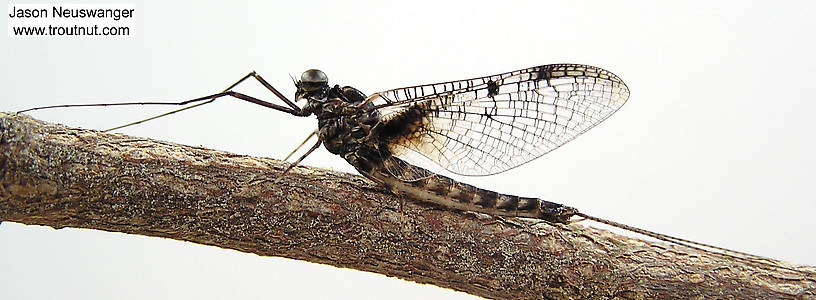
7 Nymphs
Discussions of Siphloplecton basale
i dont know what their numbers were like thgough
Start a Discussion of Siphloplecton basale
References
- Caucci, Al and Nastasi, Bob. 2004. Hatches II. The Lyons Press.
- Knopp, Malcolm and Robert Cormier. 1997. Mayflies: An Angler's Study of Trout Water Ephemeroptera . The Lyons Press.
- Leonard, Justin W. and Fannie A. Leonard. 1962. Mayflies of Michigan Trout Streams. Cranbrook Institute of Science.
- Needham, James G., Jay R. Traver, and Yin-Chi Hsu. 1935. The Biology of Mayflies. Comstock Publishing Company, Inc.
Mayfly Species Siphloplecton basale (Pseudo-Gray Drakes)
Species Range
Resources
- NatureServe
- Integrated Taxonomic Information System
- Global Biodiversity Information Facility
- Described by Walker (1853)

